Although the Star Athlete (Ball-player) is born in High School, he/she is “conceived” in formative years and is nurtured by parents and preliminary advocates to a point where the germination process is about to be concluded and left in the hands of a supposedly competent and respectable practitioner of higher mentoring – The High School Coach.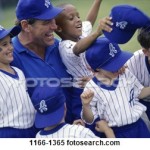
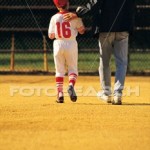
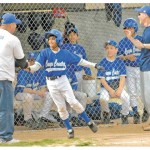
When the gestation period is over, and the rising star is about to make his illustrious debut into the clamoring “cosmos” of high school sports (baseball), he’d better be prepared to encounter the visage of either a benevolent and “self-effacing” master of “Allowing,” 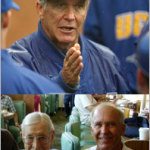 or a “tyrannical” dictator of inflexible personal intent.
or a “tyrannical” dictator of inflexible personal intent.  Or maybe something in between!
Or maybe something in between! 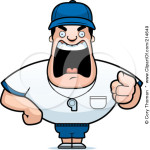 In any case, such prospect’s first characteristic demeanor must be one of “appreciation” for the opportunity to participate on the “team” – if he expects to make a positive mental impression upon the coach he expects to impress with his physical attributes. The High School coach is of great value or he is a detriment to a star athlete’s quest to become a Big League player.
In any case, such prospect’s first characteristic demeanor must be one of “appreciation” for the opportunity to participate on the “team” – if he expects to make a positive mental impression upon the coach he expects to impress with his physical attributes. The High School coach is of great value or he is a detriment to a star athlete’s quest to become a Big League player.
The greatest value of a high school baseball coach is two-fold:
1. To create an environment, physical and mental, that would afford himself and his team the best opportunities to perform at their highest collective level.
2. To allow each player on the team every opportunity to pursue the course of action best suited to his individual abilities in preparation for exerting his maximum effort in achieving highest acclaim possible for the prospect of eventually becoming a professional ball-player.
I believe that any athlete who is good enough to make his High School Baseball Team has done so because of his love of/for the game. He has dedicated himself thus far without the benefit of expert instruction that could further enhance the achievement of his object of excellence. Such an individual should continue to strive toward his ultimate goal of playing professional baseball.
In the seemingly unified “Field” of Baseball there are a multitude of “field-oriented” designations that comprise the scope of the ultimate baseball experience. These designations are aspects integral to the developing of an individual baseball player as well as defining the quality of the team on which each player performs. The designations for which all prospects to baseball success must apply themselves are the following:
- Throwing
- Fielding
- Batting
- Running
For each of the preceding “field-designations” there can be listed specific categories about which certain techniques for applying skills are incorporated relative to the “position” at which the particular player is performing his primary function. When a casual spectator wanders onto, or near, a “sandlot” field or park, and witnesses the action of a group of “ball-players” throwing a baseball, he doesn’t usually think too intensely on the proficiency level of those “throwers” of the ball. But an astute aficionado of the game of Baseball would surely recognize even the mechanical facilitation of a good throwing arm from a poor one, and the relative impact it would have at the fielding position of the thrower.
Each of the nine defensive positions on the baseball field has its own criterion for a range of competency to determine the proficiency of throwing effectiveness by those aspiring to maximum fielding prowess. A player must be capable of throwing at least at the “minimum” range of competency, in order to marginally succeed at his given position.
But what determines “full-competency” in throwing a baseball?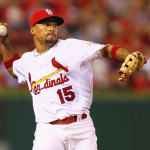
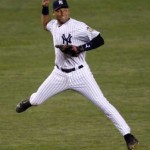
Beyond strength and natural ability, “mechanics” is the most crucial aspect for all the “field-designations” within the singular Field of Baseball ( It is mechanical correctness that determines maximum proficiency for throwing (including Pitching), batting, fielding, as well as running – to attain one’s own best level). Mechanical understanding of how one’s body can be manipulated to exact the maximum force necessary to control the throwing, batting, and fielding of the baseball with optimum efficiency and power should be foremost in the mind of any player desiring to achieve his own best effort. And there are aspects of running that take into account the mechanical advantage that understanding and application foster for those who would improve speed and agility. For the purpose of initiating discussion on implementation of a “rationale” for coaching and building a successful baseball team, let’s begin with the mechanical correctness in throwing a baseball.
Throwing a Baseball
Nothing happens in a baseball game until after the first pitch is thrown. Throwing a baseball, then, seems to be a very important part of the game. In fact, Pitchers (and Power-Hitters) are considered the most prominent characters in the game. The ability to throw the ball hard and far evokes a mythical aggrandizement from which legends are made.
What is it that enables one individual to throw harder and farther than another? Are some people blessed with natural ability to throw better than others? It’s hard to say when and how an individual developed certain physical characteristics associated with strength, or whether he acquired some unusual pre-natal condition that facilitated an accentuated leverage point, to produce a greater aptitude for throwing! But two things are certain: it has been observed countless times, that the seemingly “gifted” athlete cannot reach his/her full potential unless the proper body-mechanics are employed; and the “not-so-gifted” sometimes attains a higher level of success with intellectual astuteness and the utilization of proper body-mechanics.
It is common to evaluate a player’s throwing ability by saying, “. . . he/she has a strong or weak arm.” It is incorrect, though, to assume that the power of the throw is determined by the strength of the arm. The main power source for throwing is the “Body.” The arm provides only a fraction of the power.
From the coordinated precision of the movement from the feet to legs, to hips, to torso, to shoulders, to arm(s), wrist, hand, and fingers is the ultimate power registered in the “perfect throw.” Obviously, the player with the stronger body and arm, who applies the mechanics perfectly, will be more effective than the weaker player.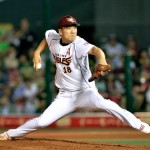
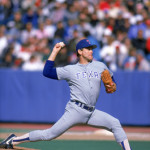
The stronger the body the greater the possibility for a strong throw, as long as the application of the proper mechanics for movement of shoulder(s) and arm come into play. Unfortunately, the stronger the body the greater is the vulnerability to injury of the shoulder and elbow if the application of proper mechanics is not enforced.
If the power generated by the body is complete, the torque action of the twisting hips and torso could be too great for a shoulder and arm ill-prepared to deliver the final dimension of the throw. If the shoulder is not locked into a position of stability, to launch the (bent) arm and that (5-ounce) ball forward at the precise time, the strain of having transported the spherical object from the point of origin to destination could have a deleterious effect on the accompanying extremities.
The weight of a 5-ounce object doesn’t seem like it should have any major affect on the throwing apparatus of a strong, well-conditioned athlete. But if you think about the strain one feels in his shoulders, while merely extending the arms outwardly, away from the body, and sustaining that position for a period of time, you could see how any additional weight would accentuate the strain. Even more stress would be added, if you realize the extra force exerted on “those joints,” by the weight of the moving arm and ball.
“The farther the ball moves away from the body, as the arm is preparing to throw it, the heavier the weight will be to the strain of the shoulder (and elbow).” As the ball is being prepared for its launch from the thrower’s hand it should remain as close as possible to the “Body-Proper,” while the arm is “whipping” itself into the forward thrusting position.
(Nolan Ryan and Masahiro Tanaka are the best exponents of this “principle” as pitchers. Ichiro Suzuki is the best example as an outfielder. Raphael Furcal and Derek Jeter and Robinson Cano as infielders! And Yadier Molina, from the catching position!)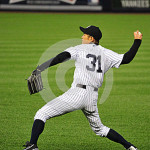
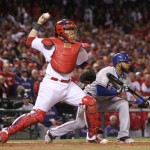
The coordinated action of the entire body (right and left sides) provides the power for the correct arm movements to occur rapidly (and safely), and thus sustain a whip-like action to move through the “throw” like a wave of tremendous force.
On the Major League level of play, very few “Big-Leaguers” throw with flagrantly improper mechanics. Those who do, suffer the consequences. The ill-effects are usually seen in Pitchers (but not exclusively), because of tendencies to improperly apply pressure to the ball in order for it to deviate from the customary “straight-line.”
Outfielders and First – base men, whose primary focus is batting, sometimes relax their attentions to fielding and throwing technique. Throwing skills have been refined to a high level by the time a player makes it to the Major League, so the manager or coach doesn’t usually need to monitor any player’s throwing mechanics, unless a pitcher is finding himself in need, or if a catcher, outfielder, or infielder is frequently on the “D.L.” with a “bad arm.”
Therefore, at any other level of baseball, from sandlot to minor professional leagues, a manager or coach needs to constantly monitor the throwing apparatus of the players he is trying to develop. No young (or old) player can advance to the highest level if he cannot throw properly. In fact Hall-of-Famer, and two-time National League MVP, Joe Morgan, would never have even advanced to the “Big-Leagues” if he hadn’t made a considerably conscious effort to improve his “throwing” in the “Minors.”
The “Coach” at the lower levels (Sand-lots High School, and College) who aspires to lead a high-quality team must institute, establish, and reinforce a teaching/learning framework for individual development that includes a motivational apparatus for self-learning and graduated improvement. He can initiate this self-motivating course of action by first orienting his “students” in what Aristotle referred to in his Nichomachian Ethics.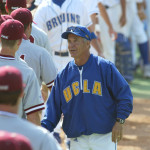

Aristotle pointed out, that, “in order to begin a study of anything that would lead to the highest understanding and demonstration of its universal verity, one must behold an example of a closest facsimile to the ideal estate, study its admirable characteristics, and extrapolate from its obvious functional proficiency a common entity by which a generic standard could be discerned, duplicated, and possibly expanded upon. Excellence in any field of human endeavor is achievable to anyone willing to devote a ‘heart and soul’ effort toward mastering the definable concomitants to successful enterprise.”
Is throwing a baseball composed of a generic component to which all prospective players could and should strictly adhere in order to properly promote the development of the correct mechanics? The most productive “throwers” of the ball, from each outfield and infield position are they whose technique is almost identical in their respective positions (at least in the “Big-Leagues”).
When an infielder is making his toughest play (one that entails his longest possible throw), he will instinctively position his body and administer his arm action in a manner similar to all Big-leaguers under similar circumstances. The most conclusive example of perfect proficiency in throwing from the outfield is that illustrated by Ichiro Suzuki in his “rookie-season” as the Mariners were playing the Oakland As.
On a base hit to Right Field, a speedy runner from first was racing his way to what he thought was going to be an “easy safe at third.” Instead, because of the magnificent display of body-control and mechanical throwing efficiency, Ichiro “gunned-down” the exasperated runner with a perfectly straight, accurate, and powerful throw—the recounting of which has been displayed on T.V. Sports Stations and Videos ever since.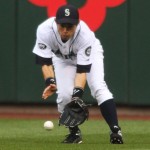

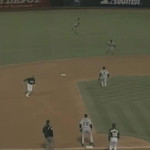
Speed of “range,” competency to receive, quickness to release, strength to deliver, and accuracy to direct the ball (to the intended base) are integral in determining the optimum effectiveness of the fielder – the latter three relative to the precise dynamics of throwing mechanics. For a short-stop to make “that” throw from “deep-in-the-hole”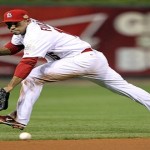

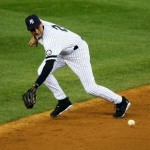
 , or an outfielder from right-field to third base, absolute, correct technique is mandatory. IF he doesn’t come up “throwing over the top,” but rather side-armed, the ball will likely not be there on time (unless for an extremely slow runner). The “closest distance between two points is a straight line.” Therefore, “over-the-top” will facilitate a straight line, while “side-armed” will produce a horizontal/vertical arc that will likely allow the runner to be safe!
, or an outfielder from right-field to third base, absolute, correct technique is mandatory. IF he doesn’t come up “throwing over the top,” but rather side-armed, the ball will likely not be there on time (unless for an extremely slow runner). The “closest distance between two points is a straight line.” Therefore, “over-the-top” will facilitate a straight line, while “side-armed” will produce a horizontal/vertical arc that will likely allow the runner to be safe!
From a close distance, a short arc is acceptable only if the infielder has no other recourse when he’s charging a slow hit ball, but to throw immediately from below as his hand touches the ball.
A coach who would portend to all his “students” that they are legitimate prospects with “Big-League” potential is more likely to get their full attention and cooperation. Along with his deployment of a sound system of fundamental skill development such a coach’s motivational proficiency will leave his players with hope and willingness to aspire to other high levels.
Too many players at the High School and College levels “Know” that they have “no chance” of becoming a “Big-Leaguer,” so why are they even on the team? Most often it is because they have always been “pretty-good,” but either never had a “good-coach” to correct their “mechanical deficiencies,” or they were too stubborn to listen to that “good-coach.”
Consequently, some coaches of mediocre teams have “stock-piles” of unmotivated students whose lack-luster performances are due to the fact that they cannot put their hearts and souls into what seem like nothing more than “High-School-Harry” heroics with merely a varsity letter for which to look forward.
In College the only difference is that some of the recruited High School “Blue-chippers” who turned down modest “Bonus-Money” from professional organizations are again the ones blatantly catered to with “pompous” disregard for fringe players who languish in virtual obscurity, left with only the “fallen scraps” from their masters’ table. Once in a while a “gutsy” individual is able to take advantage of limited opportunities and builds his own “resume” of consistent, team-oriented success until he proves to be “no-fluke,” and subsequently rises above the “crème of the crop” and provides a legacy to himself. But he probably would have had to do it himself.
The Best of coaches is he who does not “Cater” to “any one,” but rather to the collective sense of team-oriented “individual” development for all. In most (if not all) High School Programs, there is not found a single individual who looks like a “Big-League” player when he is playing catch to warm-up before practice or game.
Before each inning, while fielding ground balls from the first base-man, hardly ever is the infielder simulating the movement and throws of the professional ball-player. All because he doesn’t have a clear picture of a “Big-leaguer” in his mind! That “amateur” doesn’t see or feel himself as a “Pro”! Why? Because he hasn’t reinforced his skills in the practice of simulating the actions of his “idol”- his “Hero”!
Each aspiring “student-of-the-game” must become an astute observer to Aristotle’s admonition: “one must behold an example of a closest facsimile to the ideal estate, study its admirable characteristics, and extrapolate from its obvious functional proficiency a common entity by which a generic standard could be discerned, duplicated, and possibly expanded upon. Excellence in any field of human endeavor is achievable to anyone willing to devote ‘a heart and soul’ effort toward mastering the definable concomitants to successful enterprise.” A requirement for all prospective “super-stars” of the “Game” should be to sit-and-watch at least parts of two “big-league” games a week. “The-Coach” can easily tell who would be the dedicated players on his team! Some prospective players that I have encountered never watch baseball games, on T.V. or at the ball-park, yet they want me to help them become “good” ball-players! What or who is their “reference point”?
The “good” coach excites all of his players with the prospect of each becoming a star-performer. Because of their individual drives and determination to be the best they can be, and their innate capacity to develop, along incremental lines of progress, those skills necessary to emulate the “greatest” of players at each his own position, he then challenges them to methodically and arduously simulate every action of that “big-leaguer” when he and his partner are warming up at practice, before a game, and in-between-innings. Eventually, the positive “germinating” effect will “kick-in,” and the player, like a “body-builder” faithfully following his daily-regimented routine, will one day recognize a noticeably enhanced characteristic-attribution.
The ultimate goal in the mind of the “great” Coach would be to establish a realistic sense of “Sameness,” the spiritual essence of which proves the “Truth of Harmony’s Perfect Oneness.” In Spirit we are all the same; the differences in form would be insignificant because they conceal the sameness of content that is found in everyone’s mind.
But, in what would be considered the “present sense” of things, certain individuals seem advanced beyond their teammates, therefore putting themselves in the more noticeable positions of prominence in regard to garnering the more “prestigious” assignments in the field (as well as batting). But those players currently mired in the mediocre stages of development, if faithful (as a “mustard-seed”) to the course of action that soundly promotes a genuine enhancement of technique, will soon supersede their present ineptness with graduating states of comprehensible prowess.
Infinite Patience of an Absolute Faith will produce the “immediate effect” of what Einstein would have wanted to realize in his own goal for his “unified field theory.” To envision for yourself all the attributes of a “big-league” player, even though those traits are not yet evident to “outside” observation, and arduously but hopefully to put forth a “heart and soul” effort to fulfill the destiny of your inner reality with “perfect-practice,” you cannot but raise yourself to new and greater heights of glory.
There is no end to what the mind can imagine. Even Einstein exclaimed, “Imagination is more powerful than Knowledge,” for he knew there was a major difference between the “dream” and one who lives his dream. So put your mind to “Good-use” and see your true potential, and realize its fulfillment. Don’t be merely a “forgetful hearer,” but a “doer” of the Principle – “law of liberty.”
The student who has the dedication and yearning to be the best he can be will gain respect from others for his uncommon “work-ethic,” but he will not be congratulated, acclaimed, and rewarded unless he “proves his worth.”
The Coach can be his “way-shower” and gently guide him along the “Path to Stardom,” but cannot do the work for him. The coach cannot always tell him every little thing to do. After his initial indoctrination into the “Art and Science” of “Perfect Practice” it is up to the student to take the initiative to strengthen and perfect his “enterprise” with tirelessness and consistency as well his own creative ingenuity. The coach may provide venues for promoting individual growth and development, but since there is no limit to what one’s mind can imagine, the student is invited to think “outside the box” and supersede even his Hero’s or his Coach’s expectations.
In Baseball, “Size” is not the determining factor for the success of an individual, whether for throwing or hitting a baseball. It is not a freak accident that Pitchers like 5 foot 8 and 9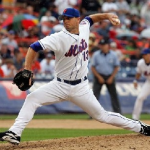
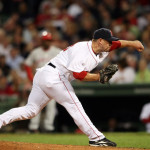
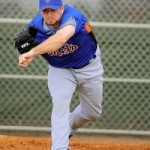
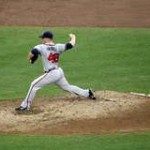
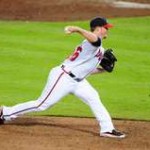 inch Billy Wagner and Craig Kimbrel throw the ball as hard as 6 foot 3 inch and 6 foot 10 inch Nolan Ryan and Randy Johnson!
inch Billy Wagner and Craig Kimbrel throw the ball as hard as 6 foot 3 inch and 6 foot 10 inch Nolan Ryan and Randy Johnson! 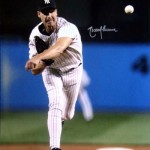 And 5 foot 8 inch Joe Morgan and Jimmy Wynn could hit balls as far as guys almost twice their size.
And 5 foot 8 inch Joe Morgan and Jimmy Wynn could hit balls as far as guys almost twice their size.
Size does not determine strength, but “correct mechanics” and reinforced thought and muscular integration with the synergistic movement of body-parts does produce the most energy for rapid motion as it is converted to power. (A similar analogy would be that of a Karate master applying the “focus” to his punch or strike.)
Aside from the apparent size differential, the four pitchers mentioned above have one thing in common: When they begin their power thrust with the turning upper body (including the shoulder and arm) after the bent legs have initiated the power drive of the twisting hips, the throwing arm has already been locked into place at a position of at least 90 degrees in order to assure the fastest possible forward rotation of the shoulder to allow a quick moving arm to assist the wrist, hand, and fingers to propel the ball at maximum speed. Therefore, the principle throwing criterion mentioned earlier comes into play, namely: “The farther the ball moves away from the body, as the arm is preparing to throw it, the heavier the weight will be to the strain of the shoulder (and elbow).”
As the ball is being prepared for its launch from the thrower’s hand it should remain as close as possible to the “Body-Proper,” while the arm is “whipping” itself into the forward thrusting position. It is only reasonable to presume that a bent arm throughout the entire action prior to the throw would be the most efficient means of facilitating a rapid, powerful, and “safe” shoulder thrust, since there would be less weight to transport to the “launch.”
It is widely accepted, from the “Big-Leagues” to “Sandlots,” that on the Infield the Third Base-men and Short-stops (I wonder how they got that name?) have to have the stronger arms because of the longer distance they most often throw the ball. Second Base-men and First Base-men don’t usually have to make as long a throw.
But, obviously, it is to a Team’s best interest to have good – arms at all infield positions because of the few (and sometimes critical) times when a strong throw could mean the difference in a “safe” or “out,” win or loss. In the Outfield, the Center-fielder and Right-fielder usually have more long throws than the left fielder, but the best possible outfield would be comprised of equal arm-strength for the same obvious reasons as well as to be able to inter-change positions at any time.
All mental facility and “character” being equal, the “Unified Field Theory-Experience” as applied to Baseball Throwing would essentially mean that all players in all 9 defensive positions would have the “same” ultimate power and accuracy in their throws no matter what their respective sizes are, based primarily on equal understanding and application of the principle of the “infallibly scientific art” of correct throwing mechanics.
This phenomenon, if feasible, would be a comforting delight for any manager or team, for the prospect of interchangeable parts could be practically beneficial. However, the arena in which more differentiation of skill is noticeable is in the “designation” of “Fielding.”
If all the players on a team could throw equally well, that condition may not necessarily transfer over to the “Art of Fielding,” either in the infield or the outfield. There have been infielders who began their Big-Leagues careers playing Short-stop (like Robin Yount), then moved to Center-field. And Center-fielders (like Bill Russell) who moved to Short-stop! Catchers (like Troy Percival and Jason Mott) who became Pitchers, while a catcher (like Craig Biggio) became an All-Star Outfielder and Second Base-man. Correct throwing mechanics (as well as batting skills in some cases) kept them “in the game” until they found the position best suited for them.
Now, is there a “generic” component that would foster the development of all prospective team players to be equally adept in “fielding” all positions with the “same” proficiency?
Coming soon: Fielding Prowess.
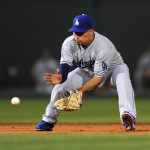
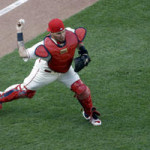
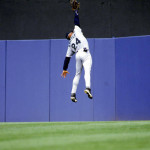
 standing player.
standing player.
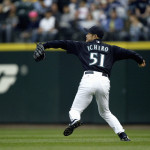
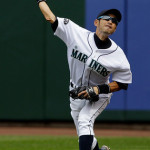
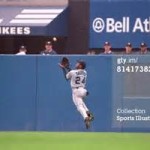
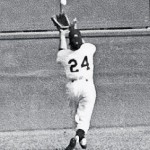
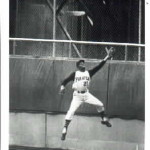
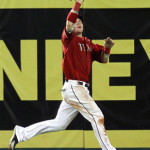
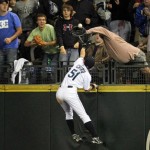
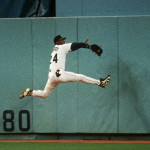
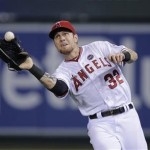























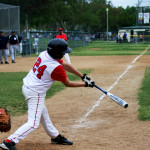
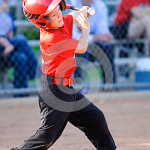
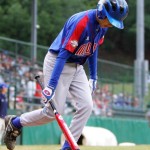
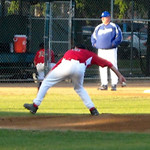

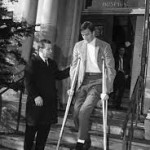
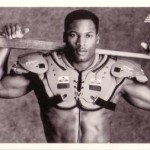
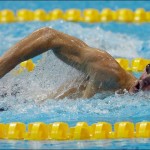
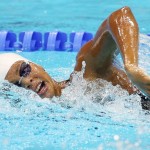
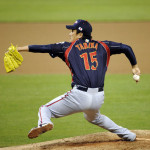
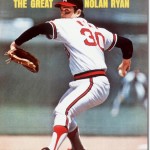




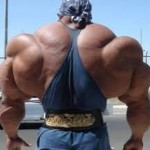
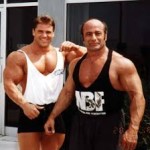
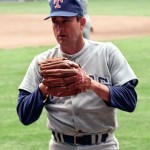
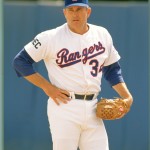
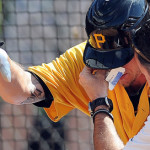
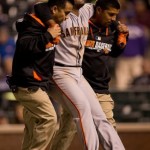
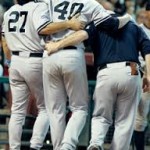
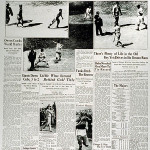
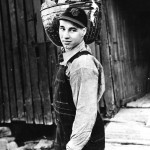
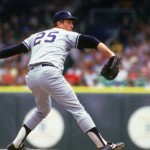
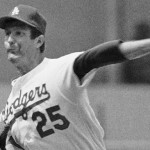
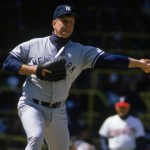

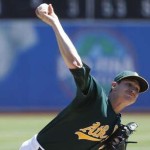

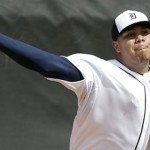
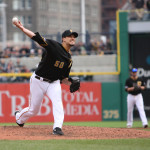
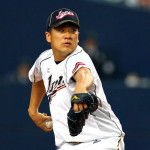
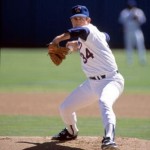
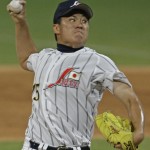
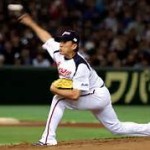 Obviously, the player with the stronger body and arm, who applies the mechanics perfectly, will be more effective than the weaker player. Also, not generally observed is the fact that, in throwing a baseball effectively, a principle law of physics always comes into play, namely, “. . . every action has an opposite and equal reaction.” If a player is right-handed, to be totally effective, he must use the left side of his body with the same intensity as he does the right, while performing the throw. This will enhance the power, as well as help secure balance with the proper follow-through. This application is analogous to that which a Karate Master invokes to maximize the power of a “strike” or “punch.” The force exerted backward(in “turnstile” fashion), by the front side of the body, not only accentuates the forward movement of the backside, but magnifies it, adding considerable power to the throw. (The same principle is expressed in swinging the bat.) The stronger the body the greater the possibility for a strong throw, as long as the application of the proper mechanics for movement of shoulder(s) and arm come into play. Unfortunately, the stronger the body, the greater is the opportunity for injury to the shoulder and arm if the application of proper mechanics is not enforced.
Obviously, the player with the stronger body and arm, who applies the mechanics perfectly, will be more effective than the weaker player. Also, not generally observed is the fact that, in throwing a baseball effectively, a principle law of physics always comes into play, namely, “. . . every action has an opposite and equal reaction.” If a player is right-handed, to be totally effective, he must use the left side of his body with the same intensity as he does the right, while performing the throw. This will enhance the power, as well as help secure balance with the proper follow-through. This application is analogous to that which a Karate Master invokes to maximize the power of a “strike” or “punch.” The force exerted backward(in “turnstile” fashion), by the front side of the body, not only accentuates the forward movement of the backside, but magnifies it, adding considerable power to the throw. (The same principle is expressed in swinging the bat.) The stronger the body the greater the possibility for a strong throw, as long as the application of the proper mechanics for movement of shoulder(s) and arm come into play. Unfortunately, the stronger the body, the greater is the opportunity for injury to the shoulder and arm if the application of proper mechanics is not enforced. 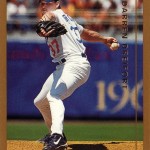
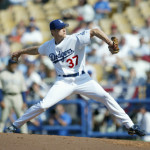
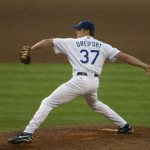
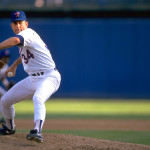
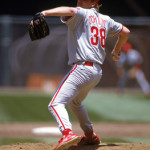
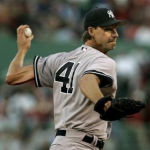
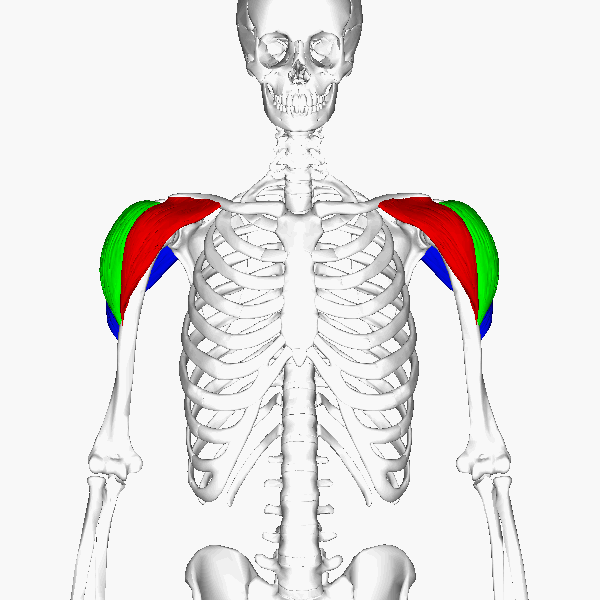
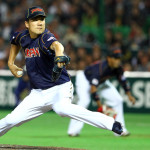 (Incidentally, the thrower’s position at this point looks similar to that of a person holding a bucket of water by the handle, and has just lifted it upward along the side of his body.) As the thrower moves sideways toward the “target,” a low center of gravity presents his body as in a low sitting position. As the front foot plants (toes pointed to-ward the target), the hips and torso begin to turn with the help of the bent front leg that is in the process of straightening.
(Incidentally, the thrower’s position at this point looks similar to that of a person holding a bucket of water by the handle, and has just lifted it upward along the side of his body.) As the thrower moves sideways toward the “target,” a low center of gravity presents his body as in a low sitting position. As the front foot plants (toes pointed to-ward the target), the hips and torso begin to turn with the help of the bent front leg that is in the process of straightening.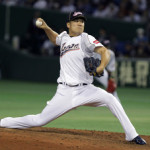
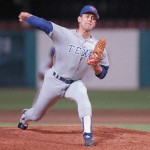 As the shoulder thrust is completing its full range of rolling-forward-motion(anterior deltoid), the arm quickly extends
As the shoulder thrust is completing its full range of rolling-forward-motion(anterior deltoid), the arm quickly extends 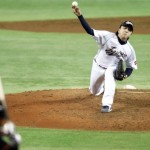
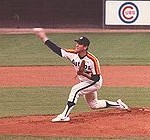
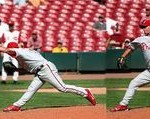 forwardly as forearm is in full pronation (not sideways
forwardly as forearm is in full pronation (not sideways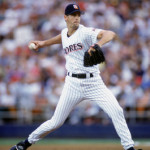
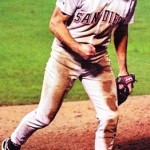
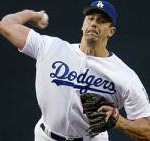
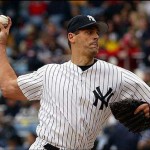
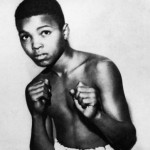
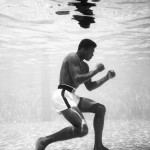

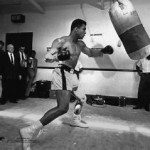
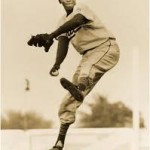
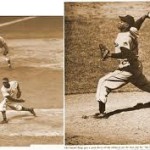

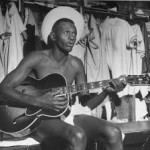

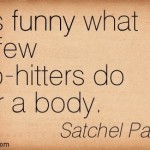
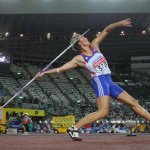 then critics are justified because there is no purposeful intent in such action, especially if it is repeated continuously. IF a pitcher (and even an Out-fielder) repeats such body and arm action countless times before a game (or even days before he is actually pitching) how does he expect to re-train his body and arm to function optimally when “it counts” under crucial game conditions.
then critics are justified because there is no purposeful intent in such action, especially if it is repeated continuously. IF a pitcher (and even an Out-fielder) repeats such body and arm action countless times before a game (or even days before he is actually pitching) how does he expect to re-train his body and arm to function optimally when “it counts” under crucial game conditions.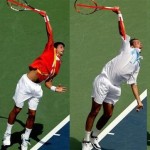
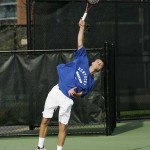
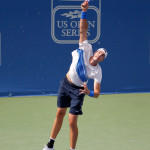


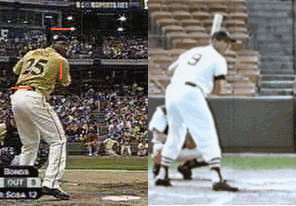
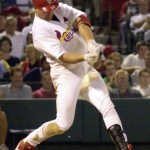
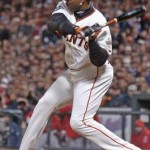
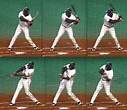
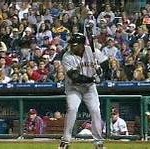

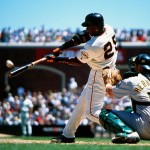
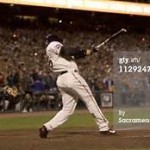
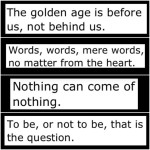


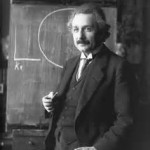


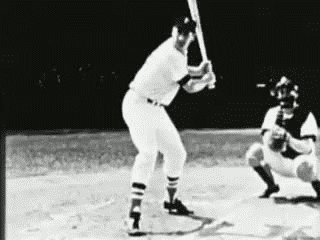
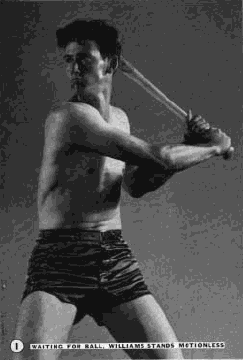
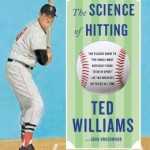
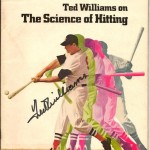
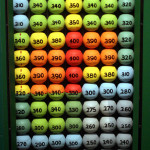
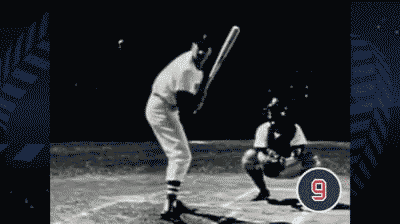 Bat united with ball for a brief moment to echo a glorified exuberance that resonated throughout the ballpark to sustain an illustrious piece of bats-man-ship. From the beginning of “gathering” body momentum, to the point where hickory and leather ignited a hint of scorching scent, the culmination of which transpired to a distinctively magnificent follow-through, the subjugated projectile took flight most often on a trajectory close to 180degrees (and climbing). (To hit the ball in any other manner would be to miss-hit it, and therefore denigrate any true artistic and scientific confluence).
Bat united with ball for a brief moment to echo a glorified exuberance that resonated throughout the ballpark to sustain an illustrious piece of bats-man-ship. From the beginning of “gathering” body momentum, to the point where hickory and leather ignited a hint of scorching scent, the culmination of which transpired to a distinctively magnificent follow-through, the subjugated projectile took flight most often on a trajectory close to 180degrees (and climbing). (To hit the ball in any other manner would be to miss-hit it, and therefore denigrate any true artistic and scientific confluence).